NHSA Blog
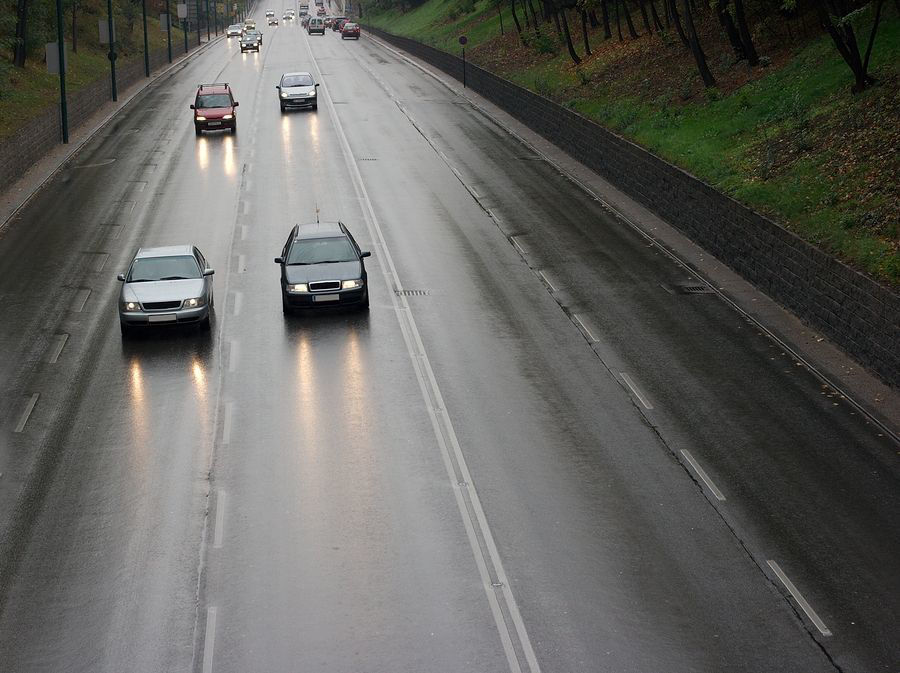
Most dictionaries define the word “discernment” as a quality that assists an individual to comprehend something. There is an obvious connection between safe driving habits and discernment. The level of discernment one possesses may vary based on how someone processes information and by how they choose to react and apply what they learn. As we consider a few examples, pay close attention to the situation being described and use them to evaluate or even “grade” your personal driving behavior based on what you discern and how it may affect your decisions.
Situation 1 Most people have busy schedules and juggle many different responsibilities and obligations. If you regularly find yourself running late or begin to feel strong emotions such as anger or frustration while driving; how may you choose to respond?
Response 1 Driving aggressively or faster than the speed limit may reduce the time needed for travel. Will this increase driving risk for yourself and others?
Response 2 Changing the time allotted for travel time budgeting additional time to travel and allotting time for unexpected delays. Will this reduce driving risks and perhaps help to avoid becoming aggressive or frustrated while driving?
Situation 2 Inclement weather is affecting driving conditions and visibility. Heavy rain is making the roadway reduce the quality of tire traction and stopping distance. The rain is also making it more difficult to see the roadway lines or to clearly see pedestrians or cyclists.
Response 1 The speed limit signs do not state a speed limit when it is raining. I can drive legally at the speed limit.
Response 2 Deciding to slow enough to allow proper time to stop proportionate to visibility, reaction time, and braking ability will reduce the risk of striking anything that appears suddenly. Paying closer attention to the road will reduce the likelihood that other internal or external factors will affect driving safely. Having the discernment to allow additional time for any drive also helps to prevent our view of time adding to the factors that influence driving behavior.
At NHSA, our goal is to provide online driver education courses that equip all drivers with what they need to be safe drivers. Whether you are a teen seeking a learner’s permit, or an adult driver seeking a basic driver safety course, check us out online to see what courses are available in your state!

The World Health Organization, (WHO) reports that over 1.3 million people die each year as a result of road traffic crashes. More than half of these deaths come from people who are NOT in the vehicle. This means that regardless of the cause of the crash, pedestrians, cyclists, and motorcyclists are at a significantly higher risk of death or injury.
Let's focus on being a safe pedestrian. A pedestrian cannot control the decisions of a driver, however intentional choices by the pedestrian can reduce their risks while walking along a roadway.
1. Walk facing traffic. Walking safely while facing the direction of traffic in the lane closest to you provides an extra layer of protection. Being able to see potential dangers allows you a few extra moments to react in a way to protect yourself. If your back is to the traffic you may not know what is approaching you until it is too late.
2. Wear clothing that is more eye catching, especially at night. If you have high visibility safety gear while walking or jogging along a road, drivers will more likely see you and know to give you the needed potective space. Having reflective gear particularly at night will draw the light from the headlights to more effectively alert drivers of your presence.
3. Be alert! Many today walk or excercize while listening to music. Others are virtually attached to their devices and are not paying attention to their surroundings. Make sure you can hear what is going on around you by only listening to music at a moderate level. Look up! If you are walking while using your handheld device be cautious. Keep your eyes on what is in front of you and periodically look around to be aware of what other dangers you may approach.
While this is not an exhaustive list of safety reminders, we at NHSA believe proper safety education is a key factor in driving safely. Please check out our driver education courses and take advantage of the benefits that come along with safe driving, and in this case, safe walking!
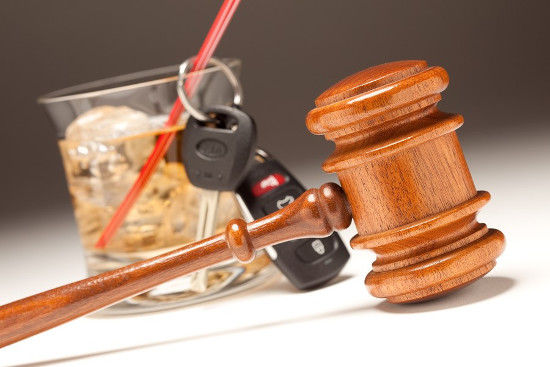
Many individuals enjoy going out to dinner and perhaps have one or two alcoholic beverages and think nothing of it. Most of the time such actions when done responsibly don’t cause any severe consequences. There is an increased risk associated with such behavior when someone fails to consider factors that will affect their safety and the safety of others.
The affects that alcohol can have on a person can vary by the person and the situation. The body can process alcohol and may feel it’s affects in a consistent way on most occasions. This may move an individual to assume that their “limit” is clear and thus they are not at risk to drive safely, however studies have shown that multiple circumstances can contribute to your body processing alcohol differently or even becoming affected by alcohol faster than others times in a way that you may not be able to realize you are more affected by alcohol than you may think. See details of a recent study HERE.
Reflecting on any situation that can potentially put you and others at risk with help to base decisions on sound reasoning. Failing to do so, regardless of the situation can lead to mistaken overconfidence and a lack of awareness of important information. For example, take a moment to see the various penalties associated with drinking and driving in Florida HERE.
The CDC reports that each year drinking and driving leads to over $100 billion dollars in costs from damages and lives lost. While financial costs can be significant, it is difficult to place a price on the suffering a family must endure from the needless loss of a loved one, nor can the guilt felt by the individual responsible may feel for the rest of their life. It is clear that driving after drinking alcohol can have severe consequences thus modesty in essential. The best protection is to designate a driver who does not plan to consume alcohol. Having a designated driver may not be required by law but it is the only way to assure that alcohol will not affect the drive home.
At NHSA, our goal is to provide online driver education courses that equip all drivers with what they need to be safe drivers. Whether you are a teen seeking a learner’s permit, or an adult driver seeking a basic driver safety course, check us out online to see what courses are available in your state!
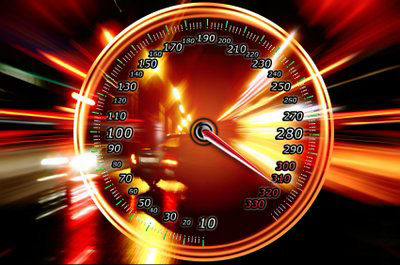
There are many factors that can cause risks associated with driving a vehicle. Some have to do with the vehicle itself, the road conditions, or even other drivers. The most significant factor of risk associated with driving is the driver himself. Unsafe driving habits such as speeding, being aggressive behind the wheel, or even becoming distracted or impaired are among the top contributing factors in a vehicle crash.
Let’s simply focus on speed. And particularly how proper and safe speeds will save you money. The most direct reason proper speed will save you money is that vehicles are designed to operate at designated speeds for optimal and most efficient performance. For most vehicles, that speed is approximately 55 miles per hour. Driving over the speed limit will cause the vehicle to burn fuel less efficiently. Long story short, you get better gas mileage, thus safe driving habits will save you money.
Another factor regarding driving at the proper speed is that it will affect the costs of vehicle repairs as well as the value and lifespan of the vehicle. Driving aggressively and speeding will affect the wear and tear of items such as tires, brakes, and even potentially other parts of the vehicle. See an article that shows how dramatically your speed affects the life of your brake pads and how often you need to replace them HERE. Safe driving habits save you money!
The obvious reason that safe driving habits save you money is the significant correlation between your driving habits and your car insurance premiums. Over a period of time an insurance company is basically assessing you and the risks they feel are appropriate based on your driving record. Let’s call this our “driving reputation.” Our reputation can be affected by one action. All the more so if it is a significant action with significant consequences. Therefore, if our “driving reputation” shows a pattern of speeding it will affect our insurance. It is logical that you will have to pay more money for your insurance premium until enough time has passed and you have regained a safer “driving reputation.” We conclude our point with…safe driving habits will save you money!!!
At NHSA, our goal is to provide online driver education courses that equip all drivers with what they need to be safe drivers. Whether you are a teen seeking a learner’s permit, or an adult driver seeking a basic driver safety course, check us out online to see what courses are available in your state!

Distracted driving can have serious consequences. While it is clear distractions can easily cause vehicular crashes it is important to be aware of those who are much more vulnerable to a vehicle crash, namely pedestrians and cyclists and others who are considered a VULNERABLE ROAD USER.
- Drive with extra caution in town! If you hit a pedestrian at 20 mph, they will almost definitely live. The survival rate for a pedestrian hit by a vehicle dramatically decreases with increased speed. At 30 mph a pedestrian will have a 1 in 5 chance of living. By the time you reach 40mph, their chance of survival is nearly gone. These statistics help us to understand why posted speed limits are so low near school zones and residential neighborhoods.
- Be prepared on rural roads. These roads should never be used as an excuse to speed because there are fewer cars on the road. Often rural roads have multiple uses. Cyclists and residents use these roads for their daily activities and may be difficult to spot. For that reason, it is important to never go over the speed limit. Remember, you are not required to drive at the top of the posted speed limit. Slowing down when approaching more populated areas or when visibility is limited can lower the risks of an incident considerably.
- Watch out when maneuvering. Many vulnerable roadway users are injured because a driver did not see them. Before turning, you should carefully check your mirrors and blind spots. Double-check for cyclists and motorcycles before changing lanes to make sure one has not suddenly appeared. If you must reverse. Make sure to do so slowly while keeping a good eye on your mirrors. It is especially vital to double-check all movements at night or when visibility is limited due to weather.
At NHSA, our goal is to provide online driver education courses that equip all drivers with what they need to be safe drivers. Whether you are a teen seeking a learner’s permit, or an adult driver seeking a basic driver safety course, check us out online to see what courses are available in your state!

Some drivers may feel that if you are staying alert. scanning the road for hazards, and driving at the posted speed limit that it doesn’t matter how closely you drive behind another vehicle. Every time you drive, you must pay attention to how much space you are leaving in front of and beside your vehicle. If you make a habit of following other vehicles too closely, you may not be able to avoid an accident if the driver in front of you hits their brakes suddenly. To determine how much space is needed, you must consider the following factors.
Weather
Is snow or rain causing the road to be slick? Is your visibility limited by rain or fog? Keep alert to changing weather conditions that could slowly affect safe driving conditions.
Time of day
Are you traveling in a direction that leaves you with the sun glaring in your eyes? Or, if it is dark outside, do the headlights of oncoming vehicles make it difficult for you to see? Animals can be difficult to spot at night or on narrow country roads, especially at dusk.
Traffic conditions
Is traffic heavy? Is there anything in the road ahead that could cause the vehicle in front of you to stop abruptly? Is there merging traffic that will bring more vehicles into your path? Good driving habits involve constantly scanning your surroundings and keeping an eye for safe paths if something requires you to react suddenly to avoid objects, animals or even pedestrians or other motorists.
While this is not an exhaustive list of factors that can affect how you determine a safe following distance, it can help to be mindful of ever-changing driving situations that must be considered.
At NHSA, our goal is to provide online driver education courses that equip all drivers with what they need to be safe drivers. Whether you are a teen seeking a learner’s permit, or an adult driver seeking a basic driver safety course, check us out online to see what courses are available in your state!
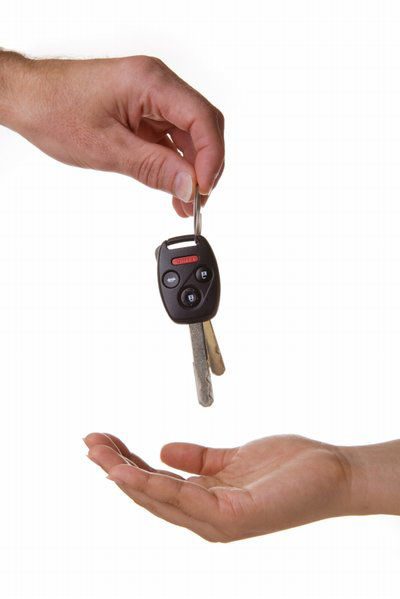
According to data collected by the National Highway and Traffic Safety Administration (NHTSA), in 2020 over 17% of all traffic fatalities involved persons over 65 years of age. Recognizing potential factors that can increase risks and taking steps to reduce them will help keep more people safe on the road.
We don’t mean to depress you or to suggest that you no longer can drive safely after a certain age, it is important to have an honest and modest evaluation of individual circumstances to help determine when it may be best not to drive or to at least wait until a safer option is available.
Medication. Sadly, as we age it is more and more likely to rely on some form of over-the-counter or prescription medication to increase the quality of our life. Are there clear warnings on such medication that describe potential risks to driving? Could it make you sleepy or less alert to your surroundings? Could it affect your response time or other important factors in your driving?
Vision. Proper vision is essential to driving safely. Even if we have corrective lenses or wear glasses, we may reach a point where we can no longer see clearly enough to safely operate a vehicle. Make sure you regularly care for your vision health to receive the best quality treatment to ensure you are still fit to drive.
Pain. Even if we do not take medication that can reduce our alertness or reaction time, we may deal with a variety of conditions that can cause us pain. Pain is a powerful distraction that can prevent us from being fully in tune with our surroundings. If the pain you are dealing with is enough to distract you, perhaps ask a friend or relative to drive you where you need to go. Or, maybe you can be flexible with your obligations and plan them on days that you are in a better condition to drive.
Response time and mobility. As we age, we tend to slow down in our response time or even in our physical abilities. Good driving habits include scanning for potential dangers ahead, keeping a safe following distance, and having an exit plan if we need to quickly react to avoid a road hazard. These steps are even more critical for older drivers who may suffer from some of the aforementioned challenges. These safe driving habits will help to limit the risks even if our reaction time is reduced. Mobility is an essential trait of a safe driver. Being able to abruptly turn the steering wheel or to step on the brake firmly are key steps in avoiding accidents. Have regular visits to your health professional who can test your mobility to confirm you are in a position to drive safely or to quickly detect and address potential conditions that may put your ability to drive at risk.
While this is not an exhaustive list for older drivers to take into consideration, it can serve as a helpful tool to identify driving risk factors and plan for them accordingly. At NHSA, our goal is to provide online driver education courses that equip all drivers with what they need to be safe drivers. We have mature driver insurance discount courses available in most states. We are confident that this course can assist older drivers to stay independent and safe behind the wheel!
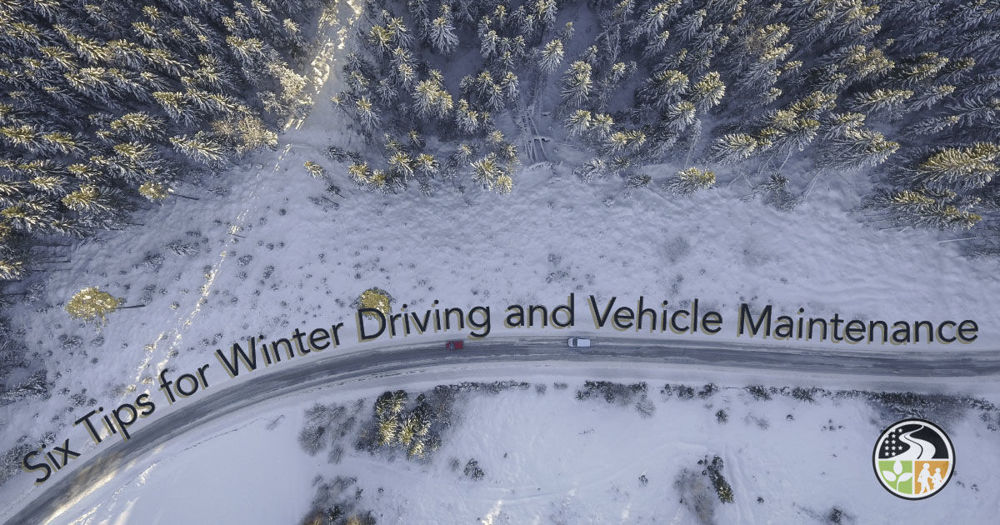
The last week of November brings road travel to one of its high points of the year. One that will be repeated with multiple secular holidays over the coming days and weeks. To be safe on the road at a time when road conditions tend to be unfavorable and at times when there will be countless other motorists going to a multitude of gatherings and celebrations, it is the time to take steps to make sure you are prepared for what you may encounter on the road.
Be Aware of Changing Weather Conditions.
The United States Department of Transportation (USDOT) has collected data that reveals over 20% of all vehicular incidents are directly related to weather conditions. It is therefore wise to know what weather you expect to encounter, especially if it is a long road trip that could have you driving through different weather conditions along the way. At times you may need to be modest and not attempt to continue on your way or even cancel your trip altogether if you expect to face conditions that could put your safety at risk. In addition, weather forecasts can change abruptly, so continuing to monitor expected conditions frequently will help to prevent being caught off guard in unsafe driving conditions.
Protect Your Visibility
First and foremost, your windshield must be clean. What may appear to be minor streaks or smudges can become significant visual deterrents at night or in the rain or snow. Clean the windshield well and have supplies on hand that can reclean if needed. Wiper blades need to be checked to confirm they are in good condition. Particularly in freezing conditions, wiper blades can easily tear or get damaged if ice forms on the windshield.
Inspect Your Tires
According to the National Highway and Traffic Safety Administration, (NHTSA) nearly 700 deaths in 2020 were the direct result of the tires on the vehicle. Inspect your tread depth to confirm your tires are safe to drive on especially if there is a chance you could encounter rain, snow, or ice on the trip.
Test Essential Equipment
Check the battery cables and confirm they do not show evidence of erosion. Test the defogger and deicer on your vehicle. The last thing you need is to be driving at night in the snow and have no way to see clearly!
Have Safety Equipment on Hand
Despite your best efforts, there are still things out of your control. To be prepared for the unexpected, it is wise to have items such as blankets, jumper cables, an emergency tool kit, flares, a small shovel, and even some food and water on hand. How many have seen news media videos where entire highways are full of cars stranded in extreme conditions? I’m sure those who faced such emergencies were relieved if they had such life-saving supplies!
Have a B Plan
If you encounter extreme conditions close to home it may be easy to turn around and get back to safety. However, for longer trips, it may require finding last-minute accommodations or to deviate your intended route to one that is safer to travel on. Being familiar with how to safely find alternate routes or to find accommodations using a device while parked can come in handy. Make sure your phone is fully charged and that you can recharge it if needed!
At NHSA, our goal is to provide online driver education courses that equip all drivers with what they need to be safe drivers. Whether you are a teen seeking a learner’s permit, or an adult driver seeking a basic driver safety course, check us out online to see what courses are available in your state!
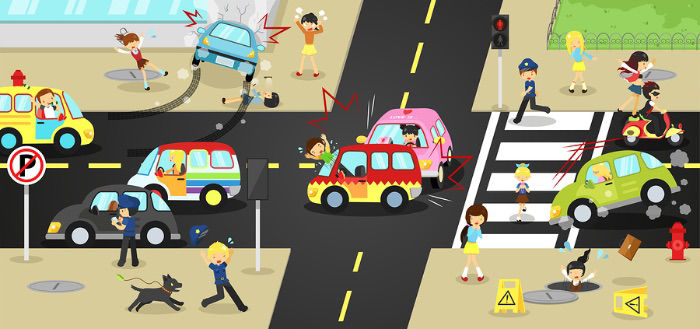
A lot is going on around you when you drive. On National Seat Belt Day, we would like to acknowledge some of the many organizations and safety advocates that work tirelessly to educate and protect drivers and passengers by reinforcing safe driving practices.
The National Highway and Traffic Safety Administration (NHTSA) provides a wealth of information, guidelines and other safety resources. We are all safer on the road thanks to their efforts.
NHSA is proud to be partnered with Students Against Destructive Decisions, (SADD). For over 40 years SADD has been a champion of empowering and mobilizing students and adult allies to engage in positive change through leadership and smart decision-making. SADD develops and shares prevention programming to engage students in the pursuit of healthy decision-making.
Safety Advocates Jacy Good and her husband Steve Johnson of Hang Up And Drive travel extensively to speak at schools, businesses and communities as advocates for distraction free roads. See their story here and marvel as we did at how they have turned personal tragedy into community triumph. We applaud their efforts to make roadways safer.
At NHSA, our goal is to prepare individuals to be safe and successful drivers. We offer a free practice test for a driving permit in all 50 states. We also offer online driver education courses for those seeking their driver’s license as well as an array of defensive driving and basic driver safety courses. Visit us to see what driver courses are available in your state!
Seatbelts Save Lives! But, do you use them?
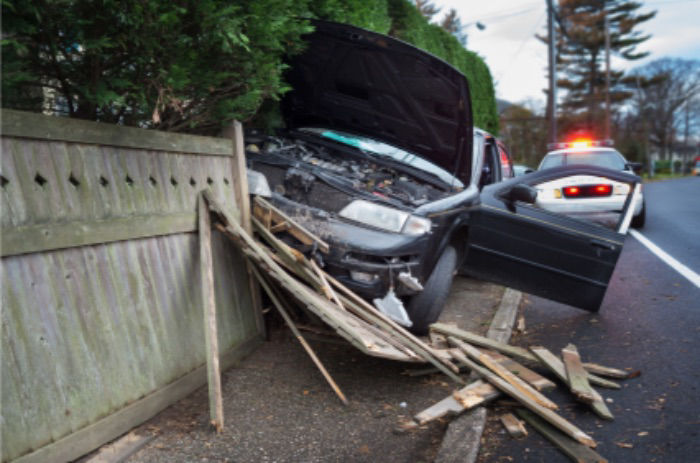
According to data collected by the Centers for Disease Control and Prevention, (CDC) not wearing a seatbelt can cost you your life. For example, data collected in 2018 revealed that over half of those killed in car crashes between the ages of 13 and 19 were not wearing a seatbelt. Nearly the same results were for those between 20 and 44 years of age. This shows that younger drivers have a higher rate of risky driving habits than other age groups do.
The National Highway and Traffic Safety Administration, (NHTSA) reported that in 2021, over 90% of drivers wore a safety belt, but until it is 100%, many put themselves at risk. The same report stated that wearing your seatbelt increases the survivability of a passenger car accident by 45%, and a light truck accident by 60%. This is solid proof that wearing your seatbelt is an important step to displaying safe driving habits.
Parents who wear their safety belts when driving with their children set an example their children will take note of. NHSA wants to help, too! Every one of our online driver education courses emphasizes the importance of wearing your seatbelt. Whether it is a course to obtain a learner’s permit, remove points from your driver’s license, or lower your auto insurance premiums, there are vital reminders about the use of seatbelts. Remaining diligent with this vital practice saves lives!
At NHSA, our goal is to provide online driver education courses that equip all drivers with what they need to be safe drivers. Whether you are a teen seeking a learner’s permit, or an adult driver seeking a basic driver safety course, check us out online to see what courses are available in your state!

